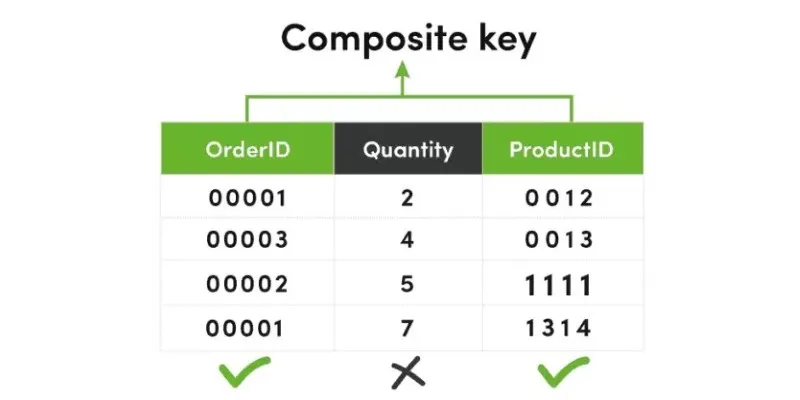When diving into the world of structured data in business intelligence, you might stumble upon a fundamental yet often confusing concept: fact table vs dimension table. If you’ve ever examined a star schema and found yourself questioning what each table signifies, you’re certainly not alone.
Understanding the difference between a fact table and a dimension table can help dispel a lot of confusion and enhance the efficiency of your data. These two table types perform distinct roles, yet they work together to narrate a coherent data story.
What Exactly is a Fact Table?
Fact tables are the numerical powerhouses of data storage. They collect raw, measurable data, usually transactional by nature. Consider a retail company: every transaction is a record in the fact table. The rows in a fact table contain quantitative values, such as sales amount, number of units sold, or shipping costs. These metrics are pivotal for performance analysis, forecasting, and dashboard creation.

Despite their importance, numbers in isolation are not very informative. That’s why fact tables are rich in foreign keys. These keys link to dimension tables, which provide the necessary context. While the fact table addresses “what happened” and “how much,” it leaves the “who,” “where,” and “when” to the accompanying dimension tables.
Fact tables grow swiftly due to their transactional nature. They are highly normalized and often heavily indexed for performance. You won’t find descriptive details here—just metrics and IDs. The table is lean but loaded.
Dimension Tables Give the Facts Their Meaning
While fact tables focus on metrics, dimension tables concentrate on context. They describe the “who,” “what,” “where,” and “when” without storing measurable data. Instead, they contain text fields and categories, such as names, dates, locations, and product details.
In our retail example, a product dimension table might include product names, sizes, brands, and categories. A customer dimension table could contain names, age groups, or geographic zones. These aren’t data points to sum or average—they’re labels that explain and group the facts.
Dimension tables often have hierarchies. A date dimension, for instance, might include columns for day, week, month, quarter, and year. This structure facilitates rolling up data from daily to monthly totals or drilling down for granular insights.
Unlike fact tables, dimension tables do not expand rapidly. Changes, such as new cities or product lines, occur less frequently. This stability makes them ideal for embedding labels, classification rules, and custom attributes.
How They Work Together in a Data Warehouse
Think of a data warehouse as a stage where fact and dimension tables perform together. The fact table delivers the action—dynamic and fast-paced. Dimension tables are the supporting characters, adding depth and identity to the narrative.
Most data warehouse systems adopt a star or snowflake schema, with the fact table at the center, surrounded by dimension tables. When running a query, such as “total sales in California for the last quarter,” it starts with the fact table to retrieve sales data, then uses foreign keys to join with dimension tables for filtering and grouping by state and date.
This relationship is many-to-one: many fact records link to one dimension record. Thousands of sales may link to the same customer or product. This setup enables analytical queries without duplicating descriptive data.
The schema also optimizes performance. Fact tables can be indexed using foreign keys, and dimension tables are relatively small and stable, allowing queries to handle massive data volumes efficiently. This separation also helps maintain clean data—dimension tables serve as reference points, ensuring consistent reporting.
Real-World Applications and Mistakes to Avoid
Grasping the differences between fact and dimension tables is crucial for building robust analytics systems. A common mistake is placing descriptive attributes into fact tables, which bloats the table, hampers performance, and complicates maintenance—especially as row counts soar.

Another pitfall is mismatched granularity. If a fact table logs minute-level data but the time dimension only supports hourly entries, reports won’t drill down accurately. Aligning granularity across tables is vital for query precision.
Many overlook the evolving nature of dimension tables. Changes, like a customer’s city or a product’s name, need management through techniques like Type 1 or Type 2 slowly changing dimensions to preserve historical accuracy. Reports risk inconsistency if past data is overwritten without version control.
Business intelligence tools like Power BI, Looker, and Tableau thrive on this structured separation. They perform optimally when facts and dimensions are well-modeled. Even in modern cloud environments, such as Snowflake or BigQuery, this architecture remains foundational. Whether working with a startup’s logs or enterprise-scale data, this distinction is a non-negotiable best practice.
Conclusion
Understanding the difference between fact tables and dimension tables is more than an academic exercise—it’s the cornerstone of scalable data design. Fact tables capture the pulse of your business, the raw metrics that drive decisions. Dimension tables provide context, transforming logs into stories and rows into insights. Together, they create a model that is both efficient and understandable. Whether building dashboards or training AI models, getting this structure right is the difference between noise and knowledge. The separation might seem technical, but it is essential for modern analytics to function effectively.
For further reading on data warehousing practices, consider exploring resources on Data Warehousing Concepts or Star Schema Design.
 zfn9
zfn9






















